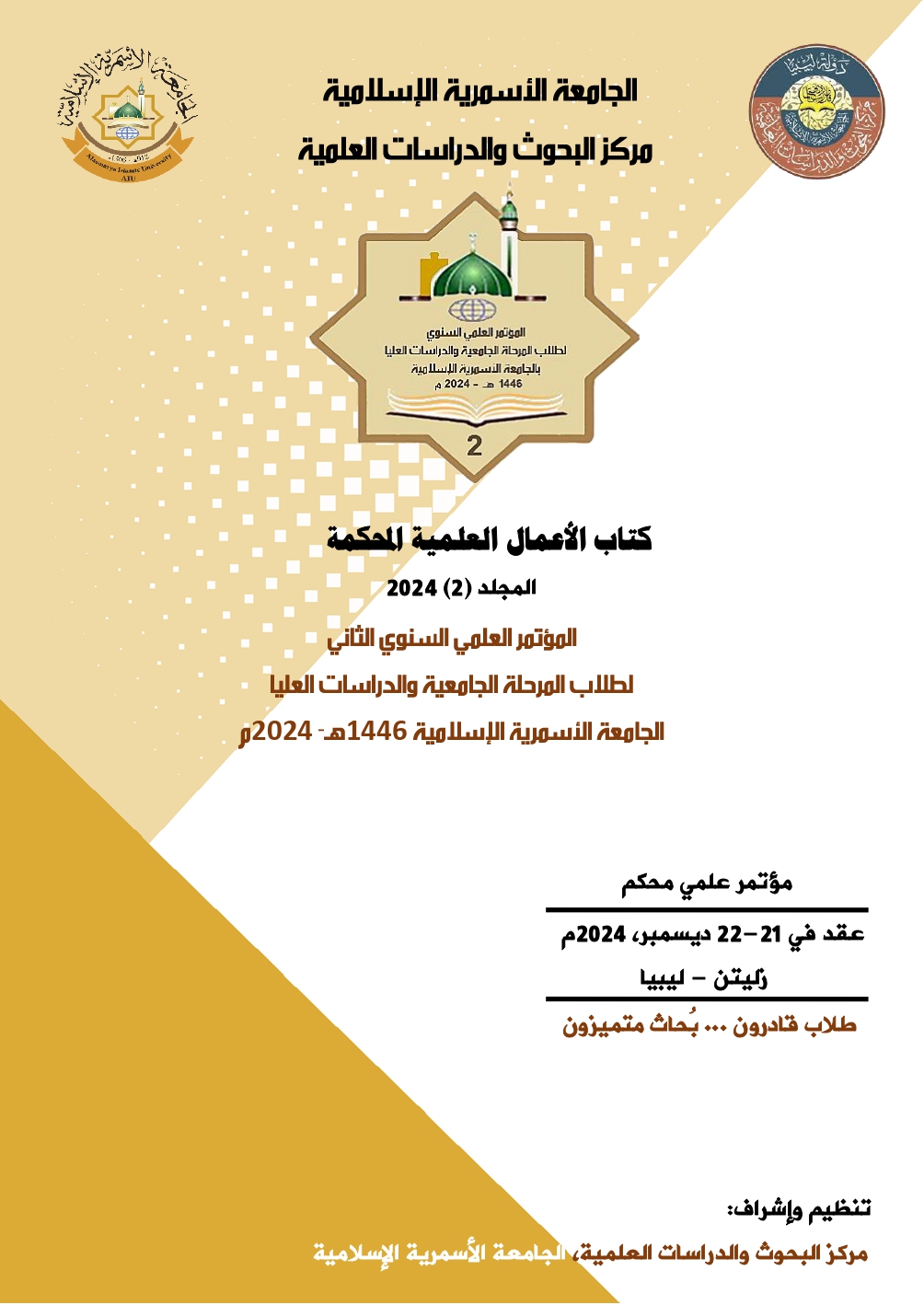Prevention and Mitigation of Medical Error by Nursing Staff at Zliten Medical Center
Keywords:
Nursing mistakes, Mitigate, Patient, Prevention, HospitalAbstract
The study main objective is to ensure patient safety. Medical mistake has a negative impact on patient safety and is a significant health concern in healthcare systems. As essential members of the healthcare team, nurses are crucial in minimizing these mistakes and limiting other types of errors, such as making the correct responsible decisions. The study's objectives were to guarantee patient safety and raise the standard of healthcare, prevent and mitigate of the medical error. The response was 60 nursing staff from Al-Hayat Medical Hospital and Zliten Medical Center had their information gathered. The findings demonstrated that the department's lack of nursing staff contributed to patient neglect, with a high relative weight of response. Additionally, the nurse's work was neglected due to complex administrative procedures. The study concluded that Increasing the number of nurses on staff at the hospital while accounting for nursing enhance to ensure the work to the high level of quality. Increasing the sufficient number of nursing staff in the hospital. Facilitates complex administrative procedures while taking into account nursing scheduling so that work hours are appropriate to their ability.
Downloads
References
AbdulRaheem, Y. (2023). Unveiling the significance and challenges of integrating prevention levels in healthcare practice. Journal of Primary Care & Community Health, 14, 21501319231186500.
AlTurkistani, M. A. A., Albarqi, H. H., & Alderaan, M. Y. (2023). Medical Errors in Pediatric Emergency to Improve Safety and Quality, A Systematic Review. World Journal of Environmental Biosciences, 12(1–2023), 41–46.
Bhati, D., Deogade, M. S., & Kanyal, D. (2023). Improving patient outcomes through effective hospital administration: a comprehensive review. Cureus, 15(10).
Conroy, T., Pinero de Plaza, M. A., Mudd, A., Mitchell, M., & Kitson, A. (2023). Measuring fundamental care using complexity science: A descriptive case study of a methodological innovation. Journal of Clinical Nursing, 32(11–12), 2903–2912.
Elliott, R. A., Camacho, E., Campbell, F., Jankovic, D., James, M.-S., Kaltenthaler, E., Wong, R., Sculpher, M., & Faria, R. (2018). Prevalence and economic burden of medication errors in the NHS in England: rapid evidence synthesis and economic analysis of the prevalence and burden of medication error in the UK. Policy Research Unit in Economic Evaluation of Health and Care Interventions. Universities of Sheffield and York.
Escriva Gracia, J., Aparisi Sanz, A., Brage Serrano, R., & Fernandez Garrido, J. (2021). Medication errors and risk areas in a critical care unit. Journal of Advanced Nursing, 77(1), 286–295.
Gerrish, K., & Lacey, A. (2010). The research process in nursing. John Wiley & Sons.
Giri, J., Poojary, A., Coto, B. S., Agarwal, A., Datta, B., Ganguly, S., Hindlekar, P., Patil, P., Vitto, J. V. A., & Choi, A. (2023). Preventing Risks of Infections and Medication Errors in IV therapy (PRIME): a patient safety initiative. British Journal of Nursing, 32(14), S4–S12.
Guitar, N. A., Connelly, D. M., Prentice, K., Nguyen, A., McIntyre, A., Tanlaka, E. F., & Snobelen, N. (2023). The role of nurses in inpatient geriatric rehabilitation units: A scoping review. Nursing Open, 10(10), 6708–6723.
Jaradat, A., Alomari, E. A. A., Bayan, M. F., & Naser, A. Y. (2024). Knowledge, attitudes and practices regarding medication splitting and crushing among the general public in Jordan: a cross-sectional study. BMJ open, 14(11), e087109.
Lundin Gurné, F., Jakobsson, S., Lidén, E., & Björkman, I. (2023). District nurses’ perspectives on health‐promotive and disease‐preventive work at primary health care centres: A qualitative study. Scandinavian Journal of Caring Sciences, 37(1), 153–162.
Manji, R. A., Manji, J. S., & Arora, R. C. (2021). Are maladaptive brain changes the reason for burnout and medical error?. The Journal of Thoracic and Cardiovascular Surgery, 162(4), 1136-1140.
Meurier (2000). Understanding the nature of errors in nursing: using a model to analyses critical incident reports of errors which had resulted in an adverse or potentially adverse event. Journal of Advanced Nursing, 32(1), 202-207.
Morath, J. M., & Turnbull, J. E. (2005). To do no harm: ensuring patient safety in health care organizations. John Wiley & Sons.
Organization, W. H. (2017). Medication without harm. World Health Organization.
Reader, T. W., & Gillespie, A. (2013). Patient neglect in healthcare institutions: a systematic review and conceptual model. BMC health services research, 13, 1-15.
Stucky, C. H., Hartmann, J. M., Yauger, Y. J., Romito, K. J., Bradley, D. F., Baza, G., Lorenz, M. E., House, S. L., Dindinger, R. A., & Wymer, J. A. (2024). Surgical Safety Does Not Happen By Accident: Learning From Perioperative Near Miss Case Studies. Journal of PeriAnesthesia Nursing, 39(1), 10–15.
Downloads
Published
Conference Proceedings Volume
Section
License

This work is licensed under a Creative Commons Attribution-NonCommercial-NoDerivatives 4.0 International License.





